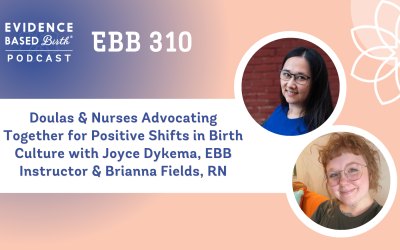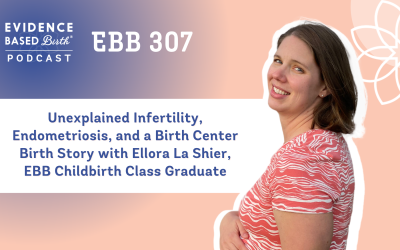
Rebecca Dekker
PhD, RN
The ARRIVE Trial (A Randomized Trial of Induction Versus Expectant Management)
This article was written on November 5, 2018, All Rights Reserved. Please read our Disclaimer and Terms of Use.
Why did researchers conduct the ARRIVE trial?
The researchers carried out the ARRIVE study (A Randomized Trial of Induction Versus Expectant Management) to find out if elective induction of labor (using medicine to start labor without a medical reason) during the 39th week of pregnancy would result in a lower rate of death and serious complications for babies, compared to waiting until at least 40 weeks and 5 days for elective induction (Grobman et al. 2018). They also wanted to see if inductions had an effect on the risk of Cesareans.
Who was in the study?
This was a large study that took place at 41 hospitals in the United States. Researchers screened more than 50,000 people to see if they could take part in the study. People had to be giving birth for the first time with a single, head-down baby and no major medical conditions. They found 22,533 people who were eligible to be in the study, but only 6,106 of them (27%) agreed to participate. The researchers randomly assigned 3,062 people to be induced at 39 weeks, and 3,044 people to expectant management. Expectant management meant you could wait for labor to begin on its own, or be induced for medical reasons, or be induced electively after 40 weeks and 5 days.
What did the researchers find?
Inducing labor at 39 weeks did not improve the primary outcome of death or serious complications for babies. For mothers, induction at 39 weeks was linked to a lower rate of Cesarean compared to those assigned to expectant management (19% Cesarean rate versus 22%) and a lower chance of developing pregnancy-induced high blood pressure (9% versus 14%). Mothers in the early induction group spent more time in the hospital in labor, but less time in the hospital postpartum.
So should everyone be induced at 39 weeks to lower the rate of Cesareans?
Although this study may be helpful with making informed decisions, it does not mean “everyone” should be induced, and professional organizations have not yet made recommendations recommending elective inductions during the 39th week of pregnancy.
The ARRIVE study did find that inducing low-risk, first-time mothers with accurately estimated due dates at 39 weeks may help to lower the Cesarean rate from 22% to 19% if care providers follow the same induction practices as they did in this study. The researchers think this is because the risk of Cesarean goes up the longer a pregnancy continues. Longer pregnancies mean more opportunities for potential complications to show up and an increasing willingness by providers to perform a Cesarean.
The ARRIVE study does not mean that elective induction at 39 weeks lowers the risk of Cesarean for every individual. Some mothers may not benefit from early elective induction, including:
- Those who prefer to avoid medical interventions. Many mothers would prefer to wait for labor to start on its own, if possible. This could be why so many people (73%) refused to participate in the study (although some may have refused because they knew they wanted early induction and didn’t want to have to wait). Some mothers want to avoid cervical ripening drugs, synthetic oxytocin, or mechanical induction with a Foley catheter, where an object presses against the cervix to help start labor. They may also want to avoid other medical interventions that go along with induction, such as intravenous fluids, continuous fetal monitoring, and restrictions on freedom of movement.
- Those whose care providers have high Cesarean rates with inductions. In the ARRIVE study, providers knew they were participating in a research study looking at Cesarean rates, which can lower their Cesarean rate because they know they’re being “watched.” In this study, it was recommended that providers follow best practices for induction, such as using cervical ripening for anyone who had an unfavorable cervix. The researchers also recommended that mothers be given at least 12 hours in early labor before diagnosing a “failed” induction and ordering a Cesarean. Most providers in this study probably did follow these strict labor guidelines, because they were able to get a Cesarean rate of 19% with early induction in first-time mothers—this rate is unusually low, and not typical in many hospitals. The average Cesarean rate after induction among low-risk, first-time mothers giving birth in 240 California hospitals was 32%, with some rates as high as 60% (Main and CMQCC, 2018).
- Those choosing midwifery care. Most of the women in this study were cared for by physicians (94%). Studies on out-of-hospital birth show that midwives achieve extremely low rates of Cesarean without the regular use of elective inductions. In the U.S., the Cesarean rate is about 5% at planned home births and 6% at midwifery-led birth centers (Cheyney et al. 2014; Stapleton et al. 2013). Hospitals with a higher percentage of midwife-attended births also tend to have lower rates of Cesarean; a recent study found a 15% Cesarean rate for hospitals that had more than 40% of their births attended by midwives (Attanasio and Kozhimannil, 2018).
Are there other ways to lower my risk of Cesarean?
There are many other ways to lower your risk of Cesarean. The ARRIVE trial reported that people assigned to elective induction at 39 weeks had a Cesarean rate of 19% compared to a rate of 22% among those assigned to expectant management. That was the absolute risk of having a Cesarean, or how often Cesareans actually happened in each group. relative risk of having a Cesarean was 16% less in the early induction group compared to the expectant management group. Absolute risk is the actual, or true risk of something happening to you. Relative risk is the risk of something happening to you in comparison to someone else, and you have to carry out a math formula to understand the reduction in risk.
Although the relative risk reduction was 16% with elective induction, studies have found larger reductions in the relative risk of Cesarean using other approaches. People randomly assigned to continuous support during labor (such as with a doula) were 25% less likely to have a Cesarean (Bohren et al. 2017). Also, when people are assigned to a less-invasive type of fetal monitoring called hands-on listening (also known as intermittent auscultation), they are 39% less likely to have a Cesarean compared to people assigned to continuous electronic fetal monitoring (Alfirevic et al. 2017). Other comfort measures, such as walking around during labor, staying hydrated, and planning a waterbirth, have also been shown in randomized trials to lower your risk of Cesarean by much more than 16%. So, there are plenty of alternatives for people who want to lower their risk of Cesarean, but don’t want an elective induction.
What do the professional guidelines say?
The American College of Obstetricians and Gynecologists (ACOG) released new practice guidelines that address the ARRIVE trial findings. They conclude that it is reasonable to offer elective induction to low-risk, first-time mothers at 39 weeks of pregnancy. However, they urge care providers to first consider three important factors: the values and preferences of the pregnant woman, the staffing and facility resources available (to assist longer labors), and the protocol for “failed” induction. Specifically, as long as there are no complications, early labor can last 24 hours or more and oxytocin can be given for 12 to 18 hours after breaking the mother’s water before the induction is considered a failure.
The American College of Nurse-Midwives (ACNM) also released a press statement saying that they continue to promote normal healthy physiologic birth and a woman’s right to make decisions during pregnancy. They express concern that many women may not desire elective induction and propose that costs might be better spent on less invasive approaches to reduce Cesareans, such as continuous labor support from a doula.
References:
- Alfirevic, Z., Devane, D., Gyte, G. M., et al. (2017). “Continuous cardiotocography (CTG) as a form of electronic fetal monitoring (EFM) for fetal assessment during labour.” Cochrane Database Syst Rev 2: CD006066.
- American College of Nurse-Midwives (2018). ACNM responds to ARRIVE Trial.
- American College of Obstetricians and Gynecologists (2018). Clinical Guidance for ARRIVE Trial, endorsed by the Society for Maternal-Fetal Medicine.
- Attanasio, L. and Kozhimannil, K. B. (2018). Relationship Between Hospital-Level Percentage of Midwife-Attended Births and Obstetric Procedure Utilization. J Midwifery Womens Health. 63(1):14-22.
- Bohren, M. A., Hofmeyr, G. J., Sakala, C., et al. (2017). Continuous support for women during childbirth. Cochrane Database of Systematic Reviews, Issue 7. Art. No.: CD003766.
- Cheyney, M., Bovbjerg, M., Everson, M. A., et al. (2014). “Outcomes of care for 16,924 planned home births in the United States: the Midwives Alliance of North America Statistics Project, 2004 to 2009.” J Midwifery Womens Health 59(1): 17-27.
- Grobman W. A., Rice M. M., Reddy U. M., et al. Labor induction versus expectant management in low-risk nulliparous women. N Engl J Med 2018;379:513-23.
- Main, E. and the CMQCC Leadership Team (2018). California Maternal Quality Care Collaborative: Comments on the Arrive Trial.
- Stapleton, S. R., Osborne, C., and Illuzzi, J. (2013). Outcomes of care in birth centers: demonstration of a durable model. J Midwifery Womens Health, 58(1): 3-14.
Birth Professionals:
Join others who also want to help bring evidence-based care to their local community.
Also, gain complimentary access to a printable library of our Signature Articles, 20+ hours of CE courses, a private community, and more.
Buy EBB Inspirational T-shirts, Due Date Buttons & Birth Affirmation Cards




Stay empowered, read more :
EBB 310 – Doulas & Nurses Advocating Together for Positive Shifts in Birth Culture with Joyce Dykema, EBB Instructor & Brianna Fields, RN
Don't miss an episode! Subscribe to our podcast and leave a review! iTunes | Spotify | YouTube Dr. Rebecca Dekker is joined by Joyce Dykema, doula and EBB Instructor, and Brianna Fields, a labor and delivery nurse, to discuss advocating for positive shifts in...
EBB 308 – The Intersection of Environmental Justice and Midwifery Care with Dr. Tanya Khemet Taiwo
Don't miss an episode! Subscribe to our podcast and leave a review! iTunes | Spotify | YouTube Curious which toxins should be most avoided for people of reproductive age and their children? In this episode, Dr. Tanya Khemet Taiwo, LM, CPM, MPH, PhD unravels the...
EBB 307 – Unexplained Infertility, Endometriosis, and a Birth Center Birth Story with Ellora La Shier, EBB Childbirth Class Graduate
Don't miss an episode! Subscribe to our podcast and leave a review! iTunes | Spotify | GoogleIn this episode, Ellora La Shier, graduate of the EBB Childbirth Class, shares about her struggle with six years of unexplained infertility and how it impacted her...



